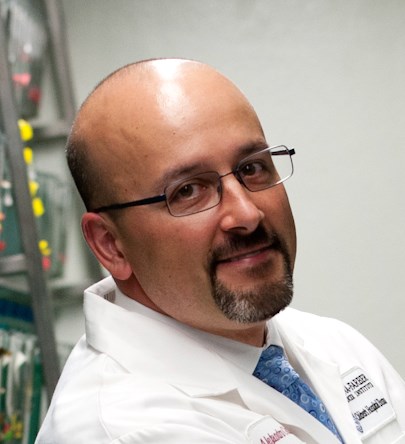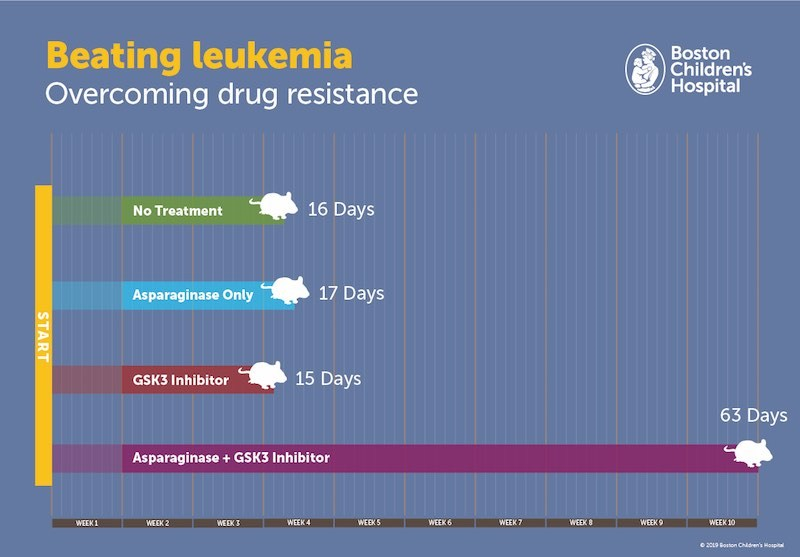The five-year survival rate for leukemia has almost doubled in the past 45 years. Still, about 20 percent of children and more than half of adults with leukemia fail to respond to treatment or form drug resistance and eventually succumb to the disease.
The most common cancer in children and teens, leukemia affects the blood and the bone marrow, where most blood cells are made.
 Former Clinical Investigator Alejandro Gutierrez, MD at Boston Children’s Hospital has made it his mission to find out how some leukemia cells evade destruction to trigger recurrence. Recently, Dr. Gutierrez and his colleagues uncovered an escape route leukemia cells use to survive and found a treatment combination to block drug resistance in mouse models.
Former Clinical Investigator Alejandro Gutierrez, MD at Boston Children’s Hospital has made it his mission to find out how some leukemia cells evade destruction to trigger recurrence. Recently, Dr. Gutierrez and his colleagues uncovered an escape route leukemia cells use to survive and found a treatment combination to block drug resistance in mouse models.
The researchers started with an interesting fact: leukemia cells depend on absorbing a vital amino acid called asparagine from the bloodstream. When deprived of this nutrient, most leukemia cells die, while normal cells are largely unaffected. For this reason, asparaginase, a natural enzyme that breaks down asparagine in the bloodstream, is used as a drug to treat leukemia.
Dr. Gutierrez focused on why asparaginase doesn’t work in about 20 percent of his pediatric patients.
His lab discovered that drug-resistant leukemia cells overcome the lack of asparagine in the bloodstream by cannibalizing proteins inside the cell, breaking them down to free up the necessary amino acid. The researchers then tested a drug that could block this source of asparagine.

They tested four groups of leukemic mice. One group received no treatment; the second received asparaginase alone; the third received only the inhibiting drug, and the fourth received asparaginase and the inhibitor together.
The first three groups of mice all died soon after — in some cases before — their treatments were complete. But the mice given the drug combination lived four times as long — perhaps longer if the treatment had continued.
Dr. Gutierrez, who sees patients in addition to conducting research, foresees launching clinical trials to test the treatment soon, offering new hope to children and adults with leukemia.







